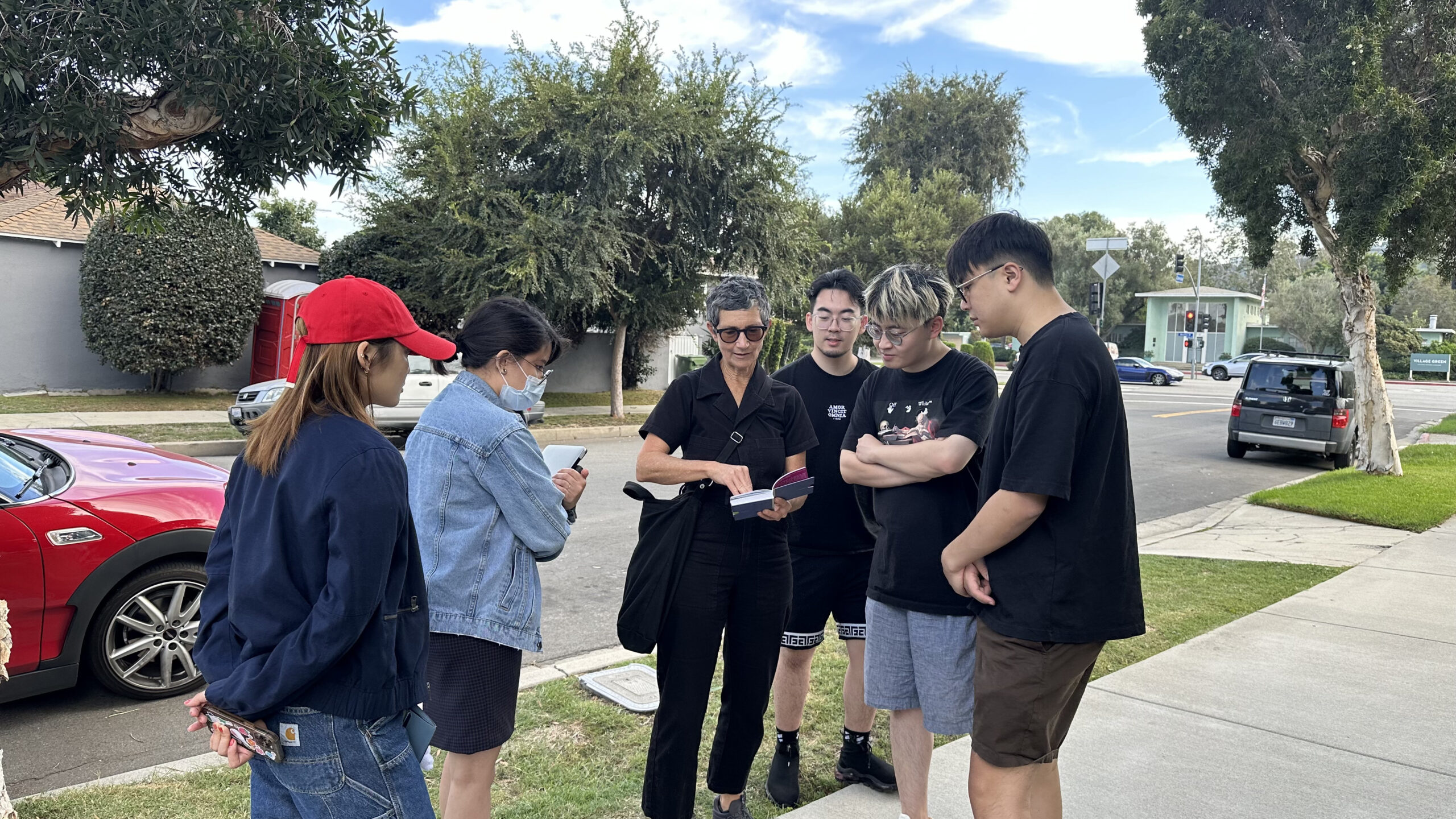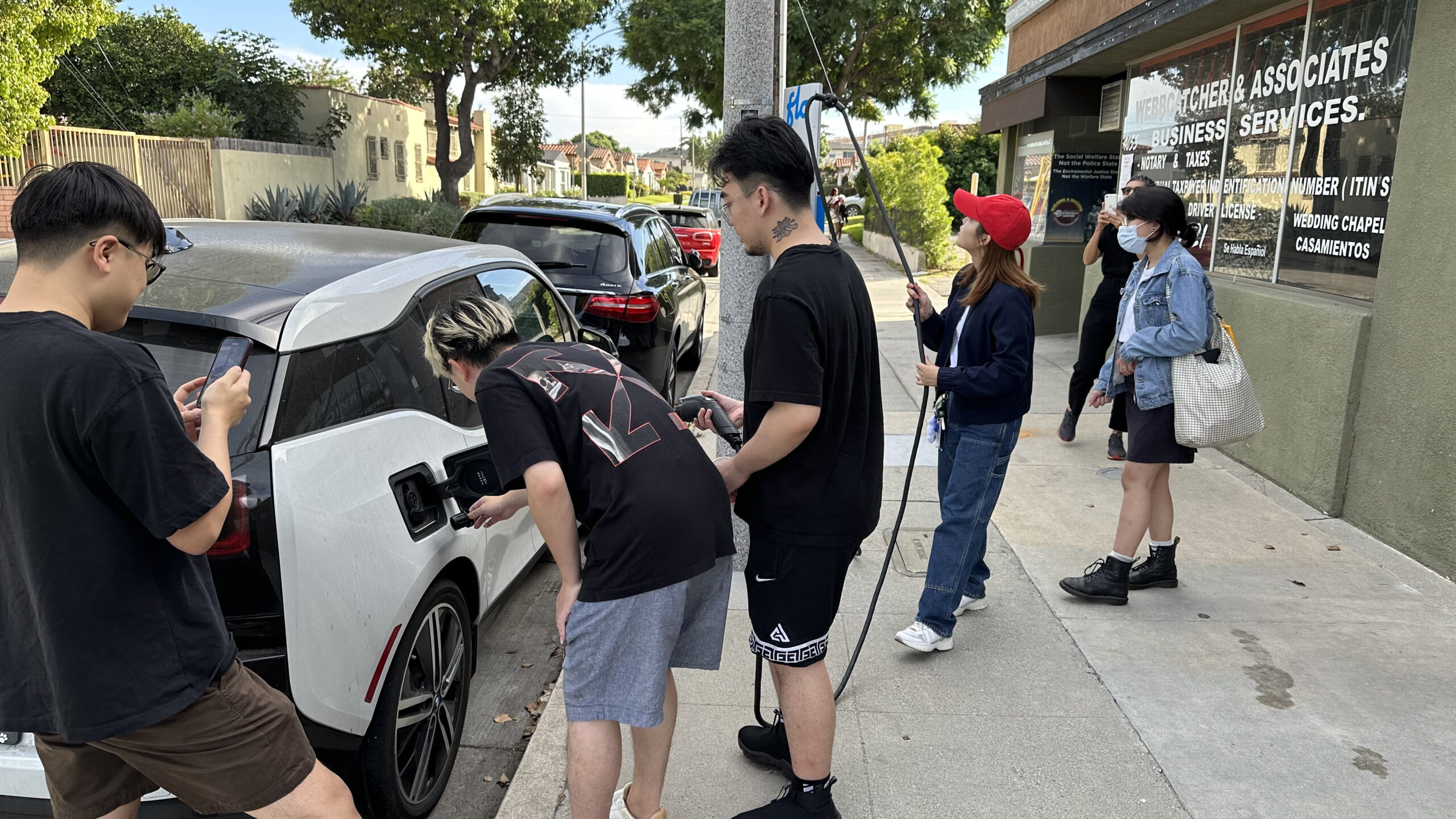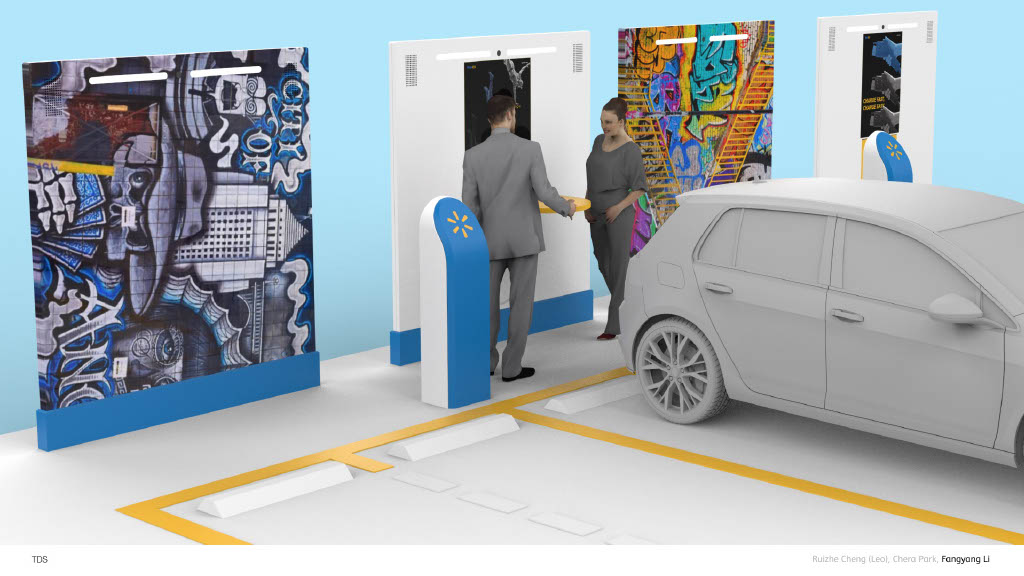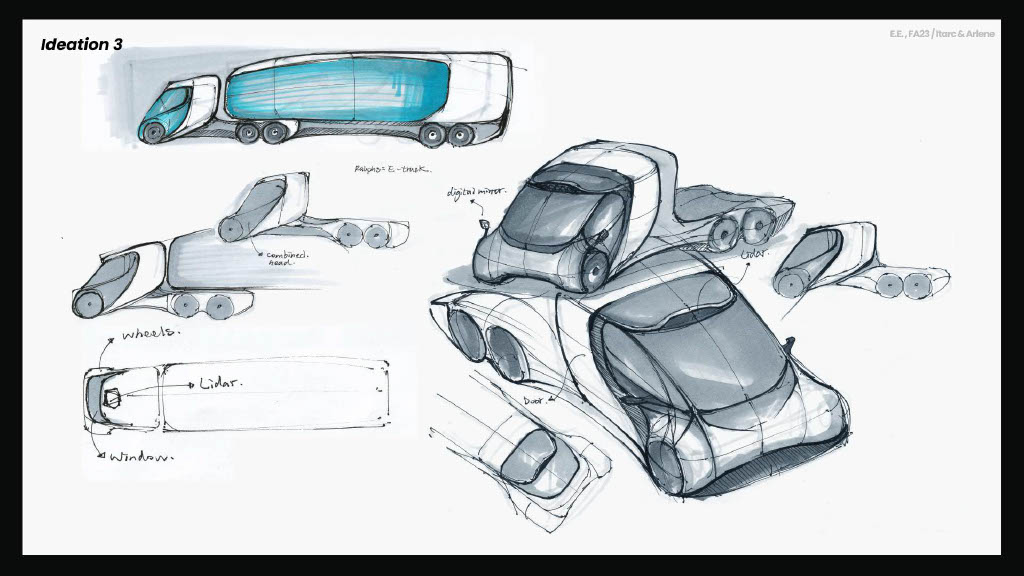Electrifying Equality TDS
- Public Policy
- Social Entrepreneurship
- Sustainable Development

The State of California will ban the sale of new gasoline vehicles by 2035. With the new mandate in-mind, this Fall 2023 Designmatters studio challenged transdisciplinary ArtCenter students to imagine how our increasingly electrified future can serve all residents equitably, especially when it comes to owning electric vehicles (EVs) and accessibility to charging facilities. Investigating the ever-changing landscape of the electrification movement, student teams delved into the social equitable challenges of communities, business owners and the dynamics of government programs and corporate interests. Finding opportunities in field research, teams crafted thoughtful campaigns and solutions that would spark awareness and provide goods, services and resources to all regardless of socio-economic factors.

“These are hard problems to solve and even experts in this space have difficulty. You are in a unique space to shine a light on these issues.”
Wayne Killen, Department of Energy Senior Consultant
Research and Project Development
The studio kickoff session introduced students to the history of electrical vehicles and why this form of transportation today is becoming more desired, acceptable and needed as climate changes. During their research, students learned about the inequality of not just the vehicles, but the public charging stations that are necessary for those who live in densely populated areas especially those in as apartment buildings. Students visited public charging stations in Baldwin Hills and Leimert Park. Teams discovered that these public charging sites are often unattractive, hard-to-find, often vandalized and offline and/or taken over by non-electric cars as a parking space.
Student teams visited specific neighborhoods, delving into the cultural and community aspects that unite residents. Teams explored free events that brought EV cars for test drives to demonstrate the many benefits of EV vehicles. Just like smart phone adoption was reluctant at first, through education and exposure, EV technology could be embraced and be a regular part of daily life.
Additionally, students also reviewed redlining and gentrification issues, investigating how social, political and cultural factors have shaped attitude and response to EVs. As they continued their research, students were reminded to step back and see a bigger picture, asking themselves “Where are the most opportunities here?” and to consider how their design thinking could bring communities together.

“I have an EV in China and wanted to learn about EV patterns and societal patterns. I got to focus on design strategies and learned how I want my design knowledge to have an impact on communities and societies. I appreciated that we got to see other areas of Los Angeles and see the essence of those neighborhoods. These experiences will help shape my design philosophies and research skills.”
Hongqiao Chen, student
With Department of Energy consultant Wayne Killen in attendance in the studio, students presented the results of their initial research which included opportunities to question this expert and consider their next steps. Teams demonstrated they understood the general problem of charging infrastructures, decided upon a target audience, presented insights from field trips and other research, described the impact the wanted their project to make and offered possible directions to achieve their goal. They considered the social and technical barriers to owning an EV. Killen critiqued why some options might work better than others and guided teams in shaping their design thinking; he offered practical tips on further research students could engage in (questionnaires, other online data, etc. ) which could deepen their concepts.
Teams honed and modified their concepts which they presented a few weeks later at their Mid Term Presentation. Here students outlined how they embraced the challenge through facts and research, presenting insights and designs that would bring EVs to the masses and not just an elite slice. Through personas, a user’s journey, mood boards, and graphics ideas, students shared concepts on how effective design thinking could narrow the equity gap. Incorporating constructive feedback, students teams then continued to modify their projects, examining their concepts from a variety of lens (cost, efficiency, target audience needs, etc.) and noting the strengths and weaknesses. Additional speakers gave teams inspirational insights. Yash Srivastava with LA Metro advised students to “make the ideas fresh and fun, less preppy” while encouraging partnerships in their design-thinking among other advice.
Outcomes
 close
close
Wal-EV Plug & Go
Read moreRuizhe Cheng, Fangyang Li, Chera Park
This concept envisions how Walmart stores can provide the ease and familiarity for loyal users to recharge their EVs since their parking lots are accessible and in well-trafficked locations. The graphic language of the logo connects the easily recognizable blue and yellow Walmart logo. Large, easy-to-read signage, including directional text/arrows on the road, directs drivers to charging stations that accommodate multiple outlets. Drivers bring their own charging cables and open the station through a QR code. Stations will be constructed of durable and economical recycled plastic and will feature a table for users. Stations will feature street art; a video screen with speakers and lights can be incorporated so users can film and post TikTok videos. Other optional ideas: collecting charging time “points” corresponding to Walmart purchases, and shopping at charging stations with purchases being delivered to their cars. Also, fun community events – flea markets, rides, festivals -- can be staged inside of the Walmart parking lots that will also introduce EVs to residents.
 close
close
The Electric Markeee
Read moreArlene Antonio, Hongqiao Chen
To attract potential EV users in Compton by showing how the vehicles can be a part of the local lifestyle, this concept addresses the sometimes-tedious charging process by creating much needed mini pop-up community centers and shopping opportunities. The Electric Markeee is a public charging truck that is also a supermarket on wheels; the truck travels through local neighbors and sets up a mini community centers at empty spaces/locations for regularly rescheduled shared charging, shopping and social mingling. These electric supermarkets are sponsored by local grocery chain Ralphs which does not have a deep presence in these communities – but can with these mobile markets. Trucks are also outfitted with localized side markets where other goods such as vinyl records, donuts, etc. can be sold. An app connects users with alerts about the Markeee schedule and shows which goods that will be available for sale. Truck designs are in the early stages, but a timetable presents how the project could be rollout in the years ahead.